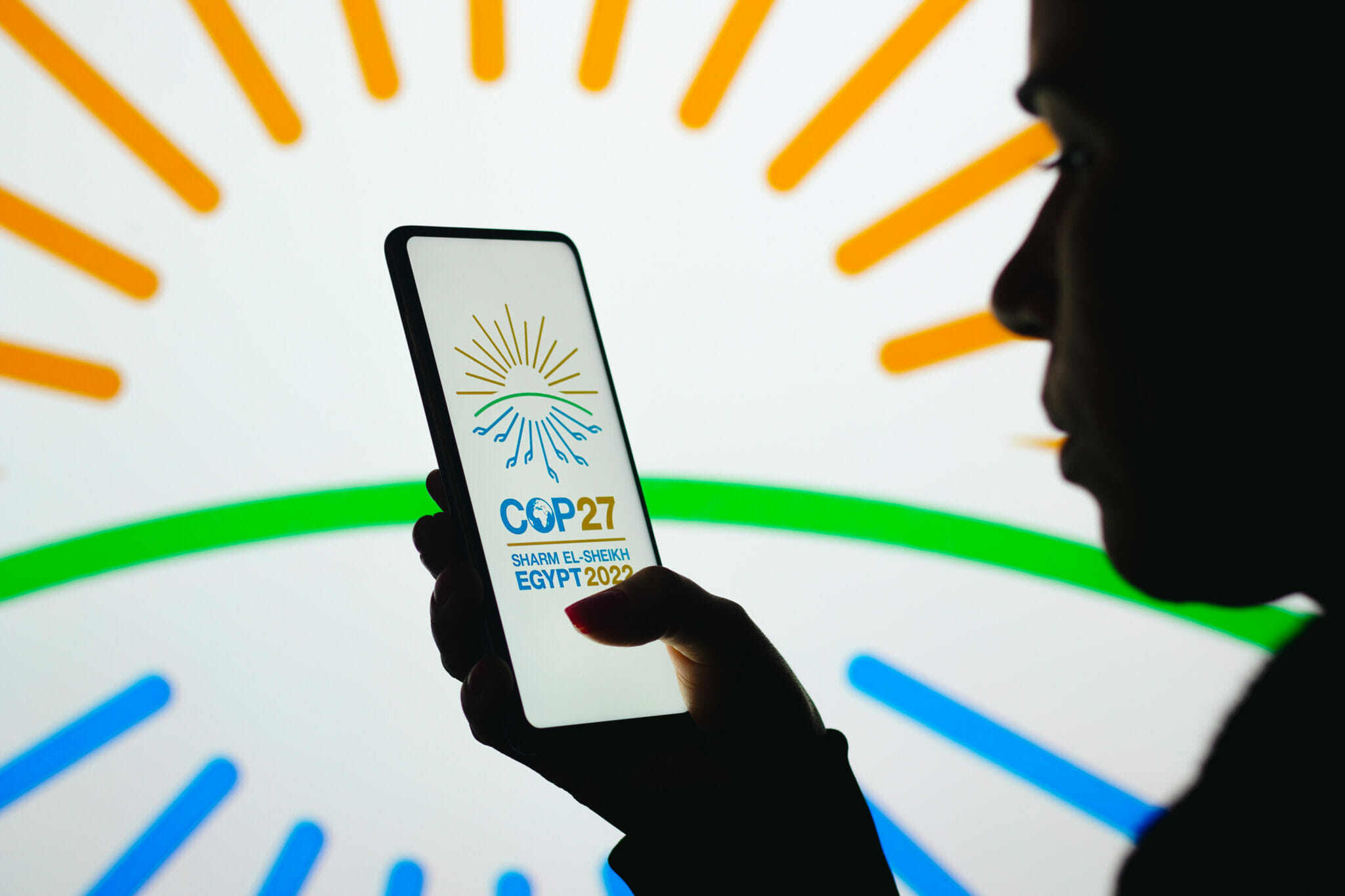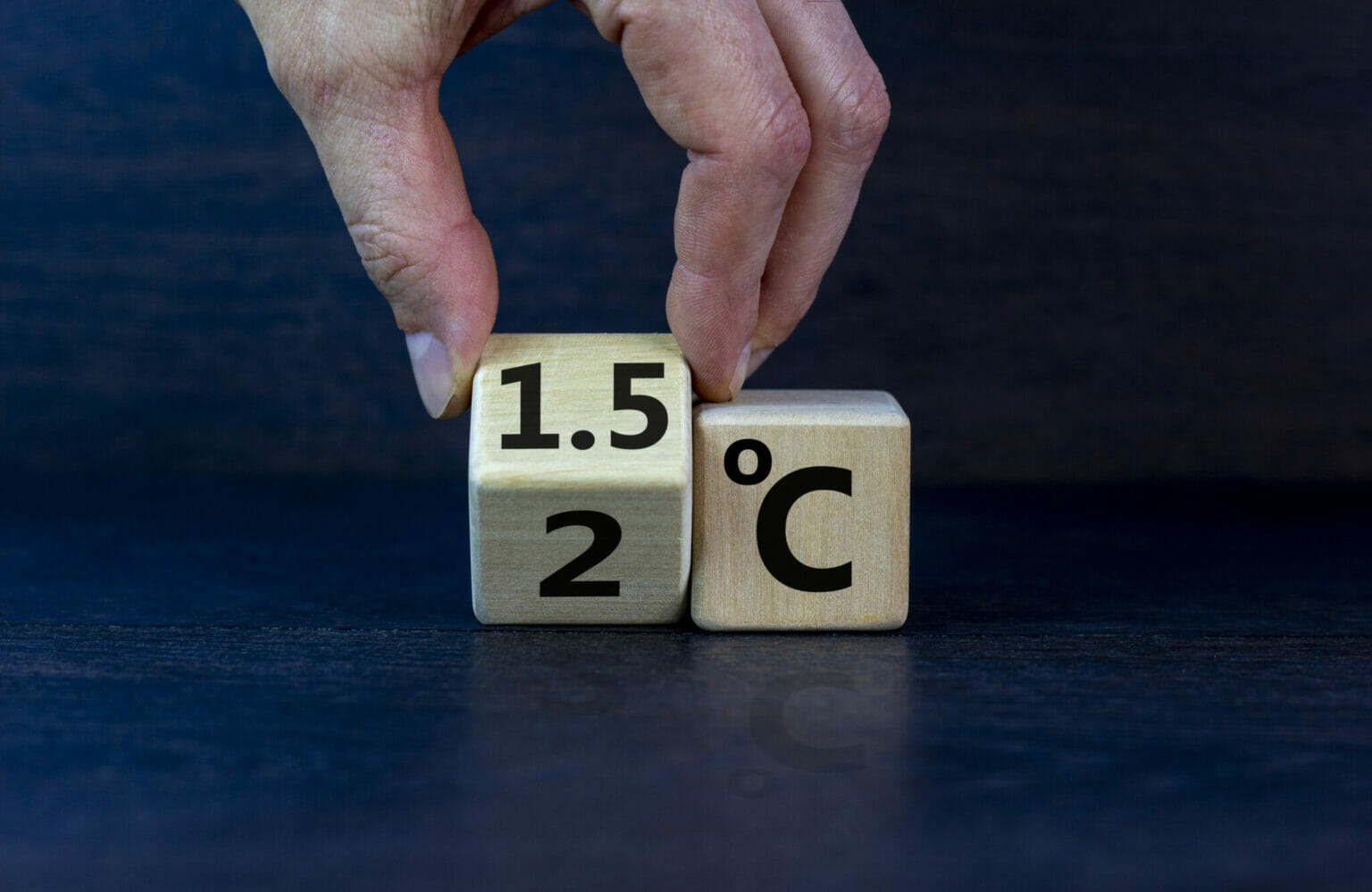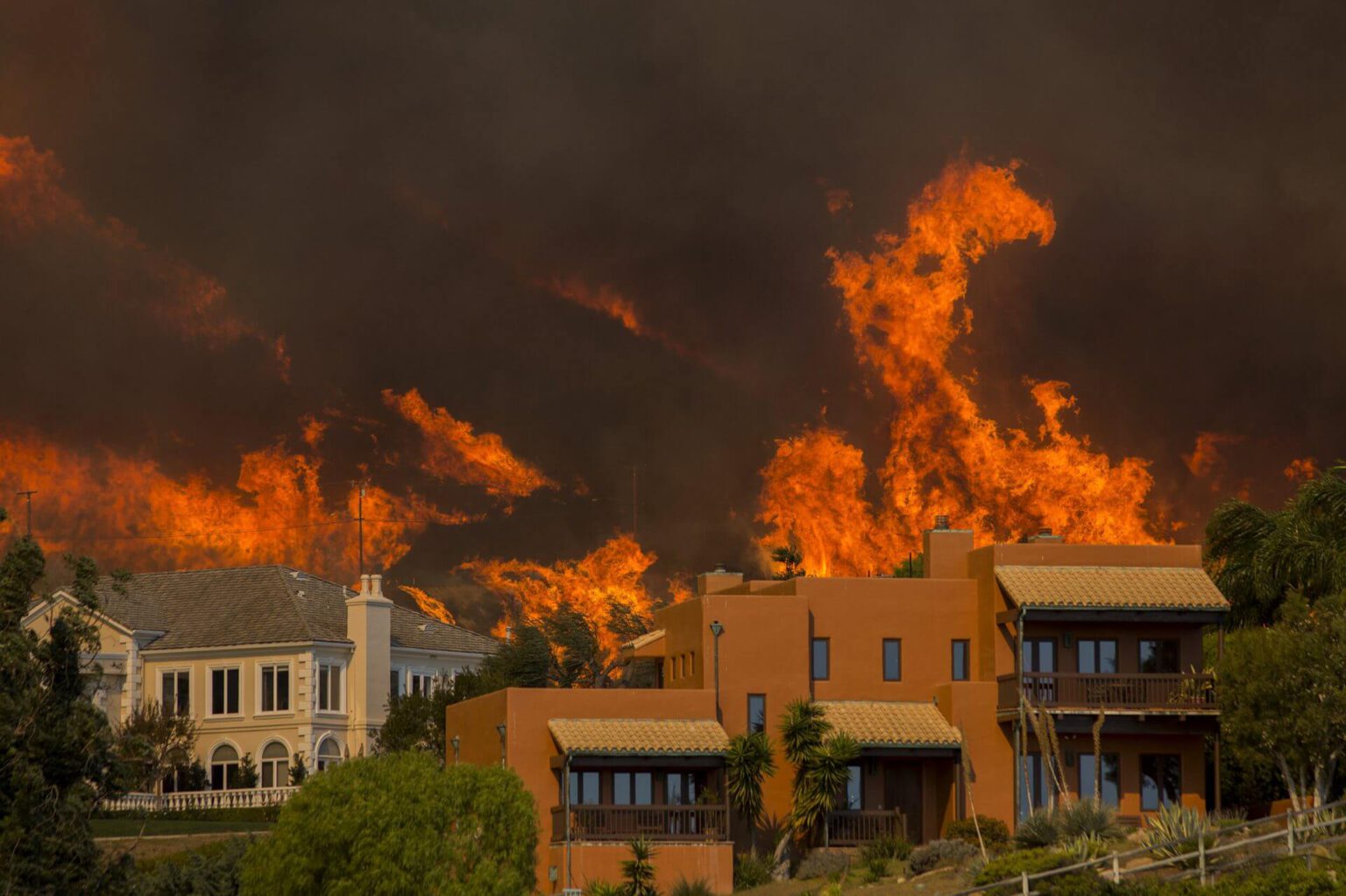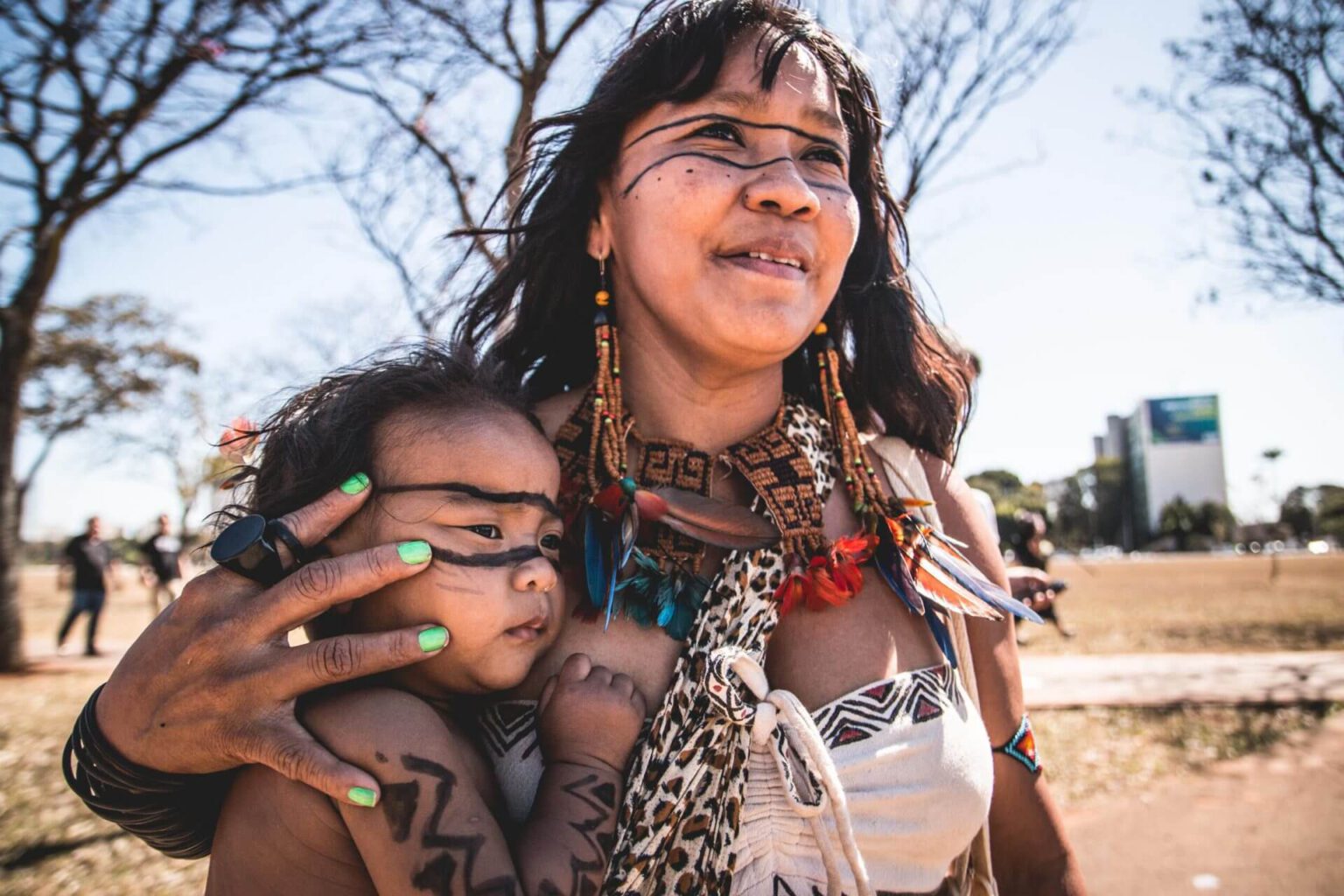This Covering Climate Now guide is meant to help fellow journalists think through how to cover this November’s COP27 global climate summit with the urgency it deserves. You’ll find coverage tips, story prompts, and links to resources you can use to help your audience understand the stakes of the summit, whether you’re covering COP27 on the ground in Egypt or remotely.
At COP27, scheduled to take place November 6 to 18 in Sharm el-Sheikh, Egypt, countries are supposed to return to the negotiating table with more ambitious plans, called Nationally Determined Contributions (NDCs), to help limit temperature rise to 1.5 degrees Celsius and adapt to climate impacts that cannot be avoided. As of late October, only 26 out of 193 countries had submitted updated plans. Meanwhile, since COP26 last year, scientific forecasts have only gotten more dire and the need for immediate, large-scale action more urgent. “We had our chance to make incremental changes, but that time is over,” the United Nations Environment Programme’s executive director, Inger Andersen, said when releasing UNEP’s 2022 Emissions Gap report on October 27. “Only a root-and-branch transformation of our economies and societies can save us from accelerating climate disaster.”
Our planetary house is on fire. We face what thousands of scientists call a climate emergency, which means that, from now on, every COP is essential for journalists to cover vigorously, holding leaders accountable for their pledges and action or inaction. Earlier this year, UN Secretary-General António Guterres laid out the stakes: “We have a choice. Collective action or collective suicide. It is in our hands.”
Why Does COP27 Matter?
The world left COP26 with 1.5 degrees C “hanging by a thread,” and in the year since, the outlook has darkened. Today, the 1.5-degree-C target is on “life support,” the secretary-general reports, and UNEP says that there is “no credible pathway to 1.5C in place.” But even as 1.5 degrees C looks ever less likely, it remains essential to press forward. “Every fraction of a degree matters: to vulnerable communities, to ecosystems, and to every one of us,” said Andersen of UNEP.
Humanity must take big, ambitious global action to limit future temperature rise to a survivable amount. The UN’s Intergovernmental Panel on Climate Change (IPCC) has made this point repeatedly — and did so again when it released its Sixth Assessment Report, in August 2021. To have a chance of meeting the 1.5-degree-C target, heat trapping emissions must be cut in half by 2030 and eliminated completely by 2050 — steps that require ambitious, rapid change across nearly every sector of society.
Over their history, COPs have gotten a bad rap. It’s easy — too easy — to be cynical about UN climate summits. True, the previous 26 COPs have not solved the climate problem. But is that the fault of the COP process? Or does more blame rest with the powerful actors, especially petro-state governments and fossil fuel companies, that have worked to blunt the process? After all, without COP21’s achievement of the 2015 Paris Agreement, the 1.5-degree-C target wouldn’t be part of the international dialogue in the first place. COPs are also the only setting where every country on Earth, notably including the ones most vulnerable to climate impacts, gets its say about how the global community should act on climate. The media has a decisive role to play here, making sure that all voices, not just those of the powerful, are heard.
So, when covering COP27, be careful not to let cynicism infect your coverage. One way to do that? Help audiences understand why these annual gatherings are important: Decisions made here will shape the severity of climate impacts affecting every community on Earth. Coverage can also clarify why these meetings thus far have not made sufficient progress. Focus on the powerful interests — the governments, industries, and others — that have stalled or blocked progress in the past. COPs are a great opportunity to do accountability journalism.
How Can Journalists Tell the COP27 Story?
There’s no one way to tell a story this big, and every newsroom is different. Some outlets will have journalists in Egypt; some will cover the summit from afar. Here are some tips for planning coverage:
Humanize and localize COP27 storylines. Although COP27 is a global summit, climate impacts are happening in every locality, making this a story for every newsroom on Earth. The best journalism will humanize and localize these issues, producing people-centered stories that illuminate the forces at play, and the consequences.
COP27 is a story for every newsroom — small to big, local to international. Leaving COP27 coverage to larger, national and international newsrooms is a missed opportunity. Interview local scientists, activists, and other experts who can explain how climate action — and inaction — will affect your community.
Cover COP27 robustly. Run as many stories as possible, at least one per day, and play them big — keeping them at the top of your homepage and front page, early in your broadcasts, and visible on social media platforms. Remember, the planet’s on fire: this is a big story.
Start now. Don’t wait until the summit’s final days to begin coverage; that’d be like waiting until Election Day to cover a presidential election. News events of this scale and importance require abundant advance coverage, starting now and continuing through the end of the summit. There are plenty of news pegs.
COP27 Story Prompts
COP27 — and all COPs to follow — will help determine the conditions under which every reader, viewer, or listener and their loved ones will spend the rest of their lives. It’s hard to imagine a story that matters more than that. It’s also why COP27 is not just a global story, it’s a local story, everywhere in the world.
Below are prompts to spark story ideas:
How do your local government officials and corporations approach the climate crisis and COP27? Do they accept climate science or deny it? Do they support and take climate action commensurate with the scale of the crisis, or do they slow-walk solutions and greenwash unsavory activities? In general, local governments have a better record of confronting the climate challenge: Does yours?
What does success or failure at COP27 mean for your audience’s daily lives? A successful summit will boost clean energy, climate-friendly farming, and similar reforms, while darkening prospects for fossil fuels, industrial farming, and similar activities. What would such changes mean for your local economy? What new jobs will become available, and what jobs might disappear? Which civic, business, and political leaders are navigating these new opportunities?
Make the connection between powerful bad actors and your audience’s pocketbook. Fossil fuel companies were aware beginning in the 1970s that burning ever more fossil fuels would catastrophically overheat Earth; their own scientists told them. Today, taxpayers worldwide are on the hook (but mostly don’t know it) for hundreds of billions of dollars of those predictable climate damages — in the form of increased flood protections, health costs, and more. And this year, oil companies are enjoying record profits while consumers struggle. Again, plenty of news pegs to tell this part of the climate story.
If you’re still hunting for story angles, consider the role of central and private banks (“follow the money” is always a good rule in journalism); food and forestry; so-called “net zero” emissions plans (and how to tell the difference between genuine and phony ones); the role of the United States, China, India, Brazil, and other high-emitting emerging economies at these talks; and not least, the role of civil society and especially young climate activists in prodding governments, corporations, and, yes, the media to do more to preserve a livable planet.
Climate Reporting Framework
The essential question for news coverage of COP27 is, “What’s at stake?” Here are three themes that can help answer that question:
The 2015 Paris Agreement set the goal of limiting global temperature rise to “well below” 2 degrees C over pre-industrial–era levels, and preferably to 1.5 degrees C. The need to get as close as possible to 1.5 degrees C was made starkly clear in the IPCC’s Sixth Assessment report released in August 2021.
- The Paris Agreement enshrined 1.5 degrees C as the preferred goal, thanks to demands from the Global South and despite resistance from big emitters.
- We’re at 1.1 degrees C now, and already extreme weather events are far more frequent. Extreme heat waves like the ones that broiled the North American West in 2021 now occur five times as often as they did historically, the IPCC found. If global temperature rise reaches 2 degrees C, they’ll occur 14 times as often.
- Additional warming is already baked in. Because humanity cannot end emissions overnight, some additional warming is already unavoidable.
- Hitting 1.5 degrees C might not still be possible — but it’s imperative to come as close as we can. Halting emissions of carbon dioxide, methane, and other heat-trapping gases quickly enough to stay within the 1.5-degree-C target is still possible in theory. However, it would require “unprecedented, transformational change,” said Ko Barrett, a vice chair of the IPCC. To have even a 50% chance, 90% of the world’s coal reserves and 60% of the oil and gas reserves must be left underground, unburned, the Guardian has reported.
Conflict between rich and poor has hampered progress at every UN climate meeting since climate change first took center stage at the 1992 Earth Summit. Rich countries have by and large refused to limit their consumption of fossil fuels or pay compensation for the resulting damages, while poor countries have insisted on their right to emit as many greenhouse gases as needed to lift their people out of poverty.At COP27, the world’s most climate vulnerable countries will press rich countries to pay for “loss and damage,” the proposition that the countries most responsible for climate change should pay for the irretrievable losses the most vulnerable countries are enduring, including both loss of life and irreversible damage to infrastructure, economics, and culture. The ethical argument for loss & damage payments is clear, though it has encountered strong pushback from US special presidential climate envoy John Kerry. Other analysts have argued that, morality aside, paying loss & damage compensation is the self-interested thing to do. For if poor countries lack the financial means to choose a green- over a brown-energy future, there is no hope of limiting temperature rise to 1.5 degrees C, and then rich countries will suffer too.
Here are some key points to bear in mind while covering the climate justice angle:
- Rich countries’ per capita emissions are exponentially higher than those of poor countries. Burning fossil fuels for many years has helped rich countries get rich and stay rich.
- Developing countries argue that they deserve the same opportunity to increase their fortune. This was the thinking behind COP26’s most dramatic moment, China and India’s last minute demand that the Glasgow Agreement call only for “phasing down,” not “phasing out,” coal burning. There is a legal basis for this: The Paris Agreement (like previous COP negotiations) explicitly grants developing countries more time than rich countries to cut their emissions.
- The US remains the world’s leading climate polluter. China has overtaken the US as the highest annual emitter of greenhouse gases, but the US is still the biggest cumulative emitter. And it’s cumulative emissions that determine how much and how fast the atmosphere overheats. Poor countries argue that fairness dictates the US and other long-industrialized nations should do the most to fight climate change.
- Climate justice is local. Climate justice is not solely a matter for global negotiations; it’s also an issue within countries and local communities, too.
Resources
- UNFCCC COP 27 site
- “Navigating Climate Misinformation” field guide [Climate Action Against Disinformation]
- “Covering COP27 — From Afar, and on Site” [CCNow Talking Shop webinar]
- “Loss and Damage” [MIT Climate Portal]
- Global South Climate Database [Carbon Brief and Oxford Climate Journalism Network]
- 2015 Paris Agreement [UNFCCC]
Conclusion
The 12 months since COP26 have demonstrated once again that follow-up and accountability are critical to the success of these summits. The COP27 story doesn’t end when the summit concludes. Journalists need to hold leaders accountable when they return home.
Watch Covering Climate Now’s Talking Shop webinar “Covering COP27 — From Afar, and on Site” for more tips and advice on how to cover COP27. Join the CCNow community as we track the COP27 story: Follow CCNow on Twitter and Instagram, join our Slack channel (select “Individual member journalist”), and sign up for our weekly ‘Climate Beat’ newsletter to make sure you don’t miss a beat. If you have questions please don’t hesitate to reach out to editors@coveringclimatenow.org.



